Daily Physical
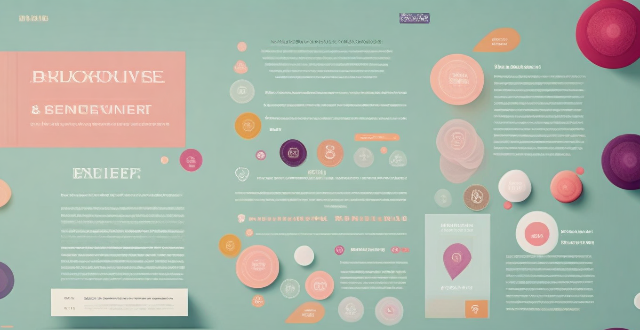
Is there a link between physical activity and improved creativity ?
The text discusses the potential relationship between physical activity and creativity, highlighting various studies and theories that support this link. It suggests that regular physical exercise can enhance creativity by improving blood flow to the brain, promoting a relaxed mental state, and providing necessary breaks from mentally demanding tasks. The text also explores practical implications for individuals and organizations, suggesting strategies such as integrating movement into daily routines and designing active workspaces to boost creative thinking. Overall, while more research is needed to fully understand the relationship between physical activity and creativity, the text encourages incorporating physical activities into daily practices to potentially enhance imaginative thinking and innovation.

What are some innovative approaches to incorporating physical activity into daily classroom routines ?
Incorporating physical activity into daily classroom routines is essential for student development. Brain breaks, movement stations, active learning games, outdoor experiences, and mindful moments are effective ways to promote physical health, cognitive abilities, social skills, and emotional well-being. Examples include stretching exercises, dance parties, yoga poses, math hoops, word cones, chair yoga, scavenger hunts, Jeopardy! relay races, spelling jump rope, nature walks, field trips, outdoor classrooms, breathing exercises, body scan meditations, and gratitude journaling.

What role does cardiovascular exercise play in managing daily stressors ?
Cardiovascular exercise is an excellent way to manage daily stressors, as it reduces the body's physiological response to stress and leads to improved mental and physical health. The benefits of cardiovascular exercise include reduced stress levels, improved sleep quality, increased energy levels, and better mental health. To get started with cardiovascular exercise, set goals, start slow, find activities you enjoy, and mix up your workouts. Incorporating cardiovascular exercise into your daily routine can help you manage stress and improve overall well-being.
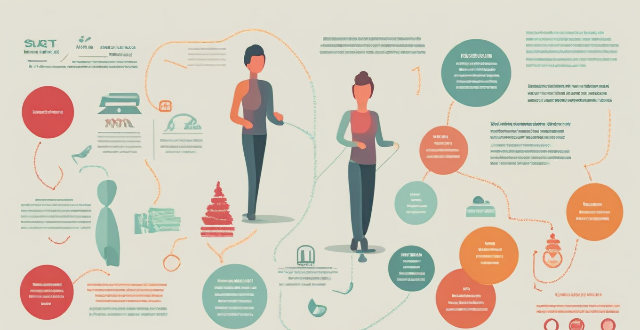
Can regular physical activity prevent depression ?
Regular physical activity can reduce depression risk by releasing endorphins, improving sleep, and boosting self-esteem. Start with 30 minutes daily of activities like walking or swimming, and consider joining a fitness class for motivation. Gradually increase intensity and listen to your body to avoid overexertion.
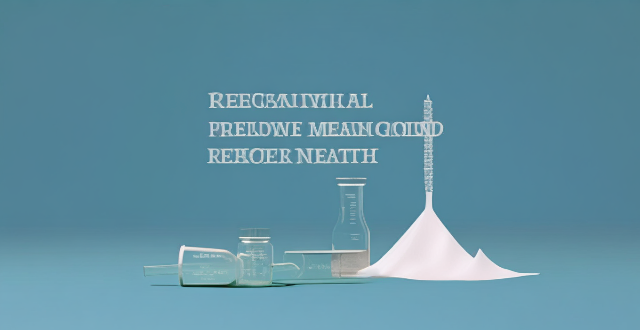
Can regular physical activity improve mental health ?
Regular physical activity can improve mental health by reducing the risk of depression and anxiety, enhancing self-esteem and cognitive function, improving sleep quality, and reducing stress. Practical recommendations for incorporating exercise into daily routines include starting small, finding enjoyable activities, setting realistic goals, making it social, incorporating strength training, staying consistent, listening to your body, and consulting with professionals.

What are some strategies for reducing sugar intake in my daily meals ?
To reduce sugar intake in daily meals, strategies includeTo reduce sugar intake in daily meals, strategies include whole foods, limiting sugary swapping snacks, being mindful of condiments, gradually reducing sugar, planning meals, and getting support.

How can caregivers encourage their elderly loved ones to participate in physical activities ?
This article emphasizes the importance of physical activities for elderly people, highlighting benefits such as improved mobility, cardiovascular health, mental health, sleep patterns, and slowed aging. It suggests strategies to encourage participation in physical activities, including starting with simple exercises, making activities enjoyable, setting achievable goals, incorporating social elements, providing proper equipment, offering support, seeking professional help, educating about benefits, maintaining consistency, and addressing concerns and fears. The conclusion stresses the need for patience, understanding, and a tailored approach to successfully incorporate physical activities into the daily routines of elderly loved ones, leading to improved health and overall well-being.

What is the relationship between physical literacy and child development ?
Physical literacy is crucial for child development, enhancing cognitive, social, emotional, and physical dimensions of learning. It improves memory, attention, problem-solving skills, communication, cooperation, empathy, self-esteem, resilience, muscle strength, cardiovascular health, and reduces the risk of chronic diseases. Incorporating regular physical activity into children's daily routines promotes their overall growth and well-being.

What are some ways to incorporate physical activity into my daily routine while still having time for socializing ?
Incorporating physical activity into your daily routine can be a challenge, especially if you have a busy schedule or limited time for exercise. However, there are several ways to incorporate physical activity into your daily routine while still having time for socializing. Here are some ideas: 1. Take the stairs instead of the elevator. 2. Walk or bike to work. 3. Schedule time for exercise. 4. Join a sports league or club. 5. Take active lunch breaks. 6. Invite friends to join you. 7. Use apps or devices to track your progress.

How can physical education be integrated into the school curriculum effectively ?
Integrating physical education into the school curriculum effectively involves establishing clear objectives, incorporating PE into the daily schedule, offering a variety of activities, collaborating with other subject areas, encouraging student participation and choice, assessing progress, providing professional development opportunities, and creating a supportive environment. These strategies aim to promote student health, well-being, and academic performance by fostering physical fitness, motor skills, sportsmanship, and teamwork.

How can sports and physical activities help prevent internet gaming addiction ?
Sports and physical activities can help prevent internet gaming addiction by offering alternative forms of entertainment, promoting mental and physical well-being, and fostering social connections. Strategies for incorporating sports include setting fitness goals, choosing enjoyable activities, and involving family or friends to make it a sustainable part of one's lifestyle.

How much time should I dedicate daily to achieve rapid progress in a foreign language ?
To achieve rapid progress in a foreign language, itTo achieve rapid progress in a foreign language, iticate a significant amount of time it is crucial to dedicate a significant amount of time daily to practice and study, including both active and passive learning activities. Establishing a daily study routine, setting realistic goals, and maintaining consistency are key strategies for success.

Can regular physical activity reduce anxiety levels ?
Regular physical activity can help reduce anxiety levels by improving mood, reducing stress hormones, promoting better sleep, increasing self-esteem and confidence, and providing social support. Engaging in at least 30 minutes of moderate-intensity exercise per day can significantly reduce anxiety symptoms.

How can online platforms be utilized to promote physical activity and healthy lifestyles ?
In the digital age, online platforms have become aIn the digital age, online platforms have become a disseminating information and online platforms have become a pivotal tool for disseminating information and fostering community engagement. These platforms can be effectively utilized to encourage physical activity and promote healthy lifestyles. Here's how: Educational Content Creation: Health and Fitness Blogs share informative articles about the benefits of regular exercise, nutritional guidance, and tips for maintaining a healthy lifestyle. Interactive Q&A Sections encourage readers to ask questions and engage in discussions about health-related topics. Video Tutorials and Workouts post home exercise routines that can be done at home without equipment. Live-Streamed Classes host live workout sessions where participants can join in real time and get motivated by others. Online Challenges and Competitions: Step Challenges use apps that track steps and create challenges for users to reach a certain step count within a given period. Community Leaderboards set up leaderboards to showcase top performers and encourage friendly competition. Healthy Eating Contests challenge participants to share photos of their healthy meals with a dedicated hashtag. Weekly Themes introduce weekly themes like "Meatless Monday" or "Water Wednesday" to focus on specific dietary habits. Social Media Engagement: Inspirational Posts share success stories about individuals who have achieved significant health milestones through physical activity and good nutrition. Daily Motivational Messages post daily messages to inspire followers to stay active and maintain a positive mindset. Interactive Features create fun quizzes related to health facts or polls about preferred types of workouts. Live Chats with Experts organize live chat sessions with fitness coaches or nutritionists for instant advice and tips. Virtual Support Groups: Online Forums and Communities establish forums where people can discuss their progress, challenges, and support each other. Accountability Partners match users with accountability partners to keep each other motivated and on track. Webinars and Workshops host webinars on topics such as stress management, sleep hygiene, and meal planning. Interactive Workshops offer workshops where participants can learn new skills like cooking healthy meals or practicing yoga. Gamification: Rewards and Recognition award badges or certificates to users who complete certain challenges or reach their goals. Points Systems implement a points system where users earn points for exercising or making healthy choices, which can be redeemed for rewards. Fitness App Integration connect popular fitness apps to allow users to sync their data and track their progress more easily. Virtual Reality Games develop or promote VR games that involve physical movement as part of gameplay.

How often should professionals take breaks for physical activity throughout the workday ?
Taking breaks throughout the workday is crucial for maintaining physical and mental well-being. Experts recommend taking short breaks every hour or two, which can include standing up, stretching, or going for a quick walk. Benefits of frequent breaks include reduced stress levels, improved focus, better posture, and increased energy levels. To incorporate breaks into your workday, set reminders, stand up and stretch, take a walk, do light exercises, and practice mindfulness techniques like deep breathing or meditation.

In what ways do public health policies address issues related to sedentary lifestyles and lack of physical activity ?
Public health policies aim to combat sedentary lifestyles and promote physical activity through various strategies, including education campaigns, environmental changes, workplace interventions, school programs, community initiatives, and legislative actions. These efforts target different settings such as schools, workplaces, and communities to encourage regular exercise and reduce prolonged sitting or inactivity. By making physical activity a part of daily life, these policies seek to improve overall health outcomes and decrease the incidence of chronic diseases related to sedentary behavior.

What role does physical exercise play in boosting mental focus ?
Physical exercise is not only beneficial for our physical health, but it also plays a crucial role in enhancing mental focus. Here's how: 1. Release of Endorphins: Regular exercise triggers the release of endorphins, which can help reduce stress and anxiety, leading to improved mental clarity and focus. 2. Increased Blood Flow to the Brain: Engaging in physical activities increases blood flow to the brain, delivering more oxygen and nutrients. This increased blood flow can help improve cognitive function, memory, and overall mental sharpness. 3. Better Sleep Quality: Exercise has been shown to promote better sleep quality and duration. Adequate sleep is essential for maintaining mental focus and concentration throughout the day. 4. Reduction of Stress and Anxiety: Physical activity helps lower levels of the body's stress hormones, such as cortisol. By reducing stress and anxiety, exercise allows individuals to maintain a clearer mind and stay focused on tasks at hand. 5. Enhanced Self-Confidence and Mood: Regular exercise can boost self-esteem and confidence, leading to a positive outlook on life. A positive mindset contributes to better mental focus and productivity. 6. Improved Cognitive Function: Studies have found that regular physical exercise can lead to improvements in various aspects of cognitive function, including attention, memory, and executive functions. These cognitive enhancements directly contribute to increased mental focus and concentration.
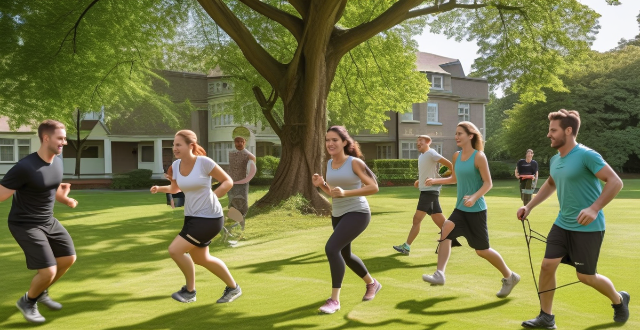
How can sports help improve the physical health of rural residents ?
Sports and physical activities can greatly improve the physical health of rural residents by enhancing fitness levels, managing weight, promoting mental well-being, encouraging social interactions, and preventing chronic diseases. It is crucial for local authorities and organizations to promote sports programs and provide accessible facilities to encourage more rural dwellers to engage in physical activities regularly.
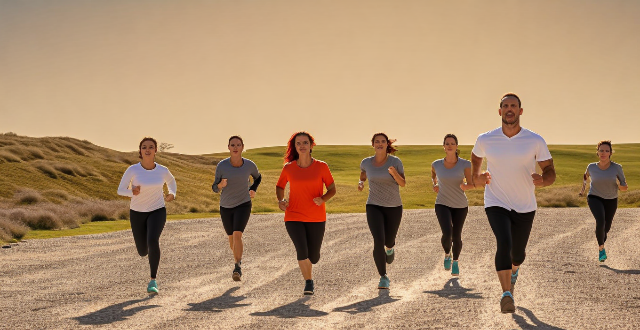
How can companies encourage employees to engage in physical activities ?
Companies can encourage employees to engage in physical activities through various strategies such as offering on-site fitness facilities, promoting active commuting, allowing flexible work arrangements, organizing health and fitness challenges, conducting education and awareness programs, implementing supportive policies, and leading by example. These initiatives not only promote a healthy lifestyle but also enhance productivity, reduce absenteeism, and foster a positive work environment.

How does sports education contribute to physical fitness and overall health ?
This text discusses the importance of sports education in promoting physical fitness and overall health. It highlights various benefits such as improved cardiovascular health, muscular strength, weight management, mental well-being, social interaction, and injury prevention. The text emphasizes the role of sports education in fostering healthy lifestyle habits and reducing the risk of obesity-related health issues, heart diseases, and stroke. It also mentions the mental health benefits of engaging in sports activities, including reduced stress, anxiety, and depression. Finally, the text underscores the importance of sports education in developing teamwork skills, leadership qualities, and problem-solving abilities.

How do wearable devices integrate with health management apps to provide more accurate data on physical activity levels ?
Wearable devices and health management apps work together to provide accurate physical activity data. The integration process involves data collection, transmission, analysis, visualization, and feedback. This collaboration offers benefits such as accurate data tracking, personalized insights, goal setting and tracking, and improved health outcomes. Examples of integrated systems include Fitbit and Fitbit App, Apple Watch and Apple Health App, and Garmin Devices and Garmin Connect App.

What role does the media play in promoting physical activity and healthy lifestyles ?
The media has a significant impact on promoting physical activity and healthy lifestyles by raising awareness, disseminating information, providing motivation and inspiration, increasing accessibility and convenience, and offering practical health tips. Through educational campaigns, success stories, fitness challenges, online workouts, and health tips, the media can encourage people to adopt healthier habits and increase their physical activity levels.

How do different religions view the importance of physical fitness and athleticism ?
This text explores the significance of physical fitness and athleticism in various religions, including Christianity, Islam, Hinduism, Buddhism, and Judaism. It highlights that while each religion has its unique perspective on maintaining a healthy body through exercise and sports, most acknowledge the importance of physical well-being for spiritual growth and fulfillment. The discussion emphasizes key points such as how Christians view the body as a temple, Muslims strive for balance in physical pursuits, Hindus see the body as a vehicle for enlightenment, Buddhists focus on gentle exercises, and Jews recognize the interconnectedness of physical and spiritual health. Overall, the text suggests that taking care of the body is essential across different faiths.
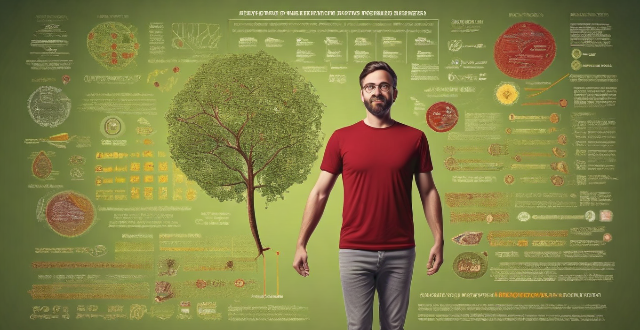
How can people with disabilities incorporate physical activity to improve their mental well-being ?
Physical activity is crucial for everyone's mental well-being, including those with disabilities. Engaging in physical activities can help reduce stress, anxiety, and depression while improving mood, self-esteem, and overall quality of life. Here are some ways people with disabilities can incorporate physical activity into their lives to improve their mental well-being: start slowly and gradually increase intensity; find an appropriate exercise routine; set realistic goals; incorporate mindfulness techniques; seek support from peers and professionals; make it fun!
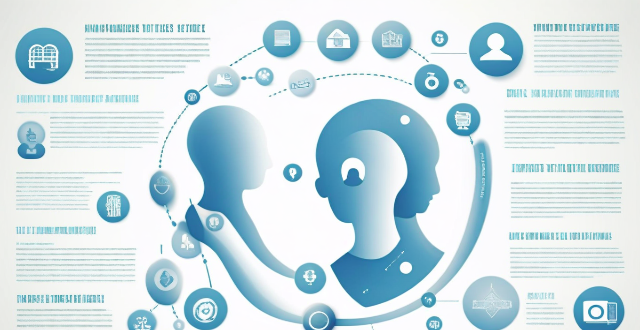
In what ways do physical activities promote mental health and deter video game dependency ?
This topic summary delves into the intricate relationship between physical activities, mental health, and video game dependency. It emphasizes the role of physical activities in promoting mental well-being by boosting mood, enhancing cognitive functions, and providing social interaction. Conversely, it highlights how these activities can deter video game dependency by offering alternative forms of entertainment, setting boundaries for gaming time, and fulfilling achievement needs. The text underscores the importance of maintaining a balance between digital leisure and physical activities for overall mental health and well-being.

How does hydration affect physical activity ?
Hydration is crucial for physical activity, affecting performance, endurance, and well-being. It regulates body temperature through sweating and heat tolerance, supports energy production and recovery, lubricates joints, maintains blood volume for heart function, and ensures mental clarity. Dehydration can lead to decreased performance, impaired thermoregulation, cardiovascular strain, and reduced cognitive abilities. To maintain hydration during physical activity, strategies include pre-activity hydration, regular fluid intake during exercise, post-activity rehydration, electrolyte balance, monitoring urine color, listening to thirst signals, and avoiding diuretics.

Can physical activity improve mental health ?
Physical activity has been found to significantly improve mental health by enhancing self-efficacy and stress self-management skills. Research shows that engaging in physical activities can lead to a sense of accomplishment, boosting an individual's confidence in their abilities, which in turn fosters better stress management and contributes to enhanced mental well-being. This relationship is particularly important for adolescents, a demographic vulnerable to mental health challenges. Future research should focus on identifying specific types of physical activities that have a greater potential to enhance these skills, guiding the development of targeted interventions aimed at improving mental health through physical activity.
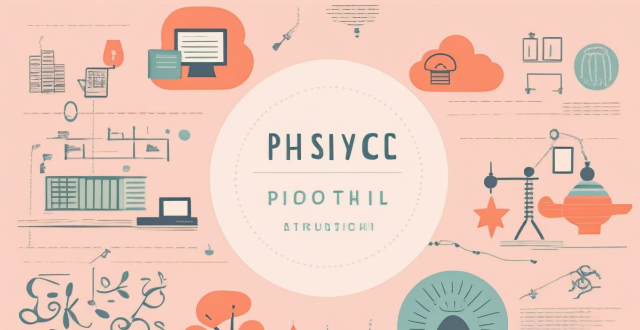
Does regular physical activity prevent burnout ?
Regular physical activity can help prevent burnout by boosting mood, reducing stress, improving sleep quality, enhancing cognitive function, and promoting social interaction. However, it should be part of a broader approach to managing stress and preventing burnout.

How does physical activity impact public health policies ?
The text discusses the importance of physical activity in promoting individual and public health. It outlines how regular exercise can prevent chronic diseases, improve mental health, and aid in weight management. The text then explains how these benefits influence public health policies, including the development of programs promoting physical activity, funding for research, and public awareness campaigns. Overall, it emphasizes the need for governments to promote physical activity through various initiatives, aiming to create a society where being active is a way of life.